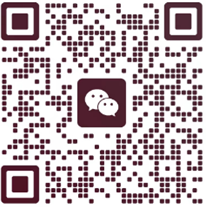Wire and cable inspection method
(1) DC resistance detection
There are clear provisions in the relevant national standards: the DC resistance of wires and cables must be based on the conductor resistance per kilometer as the reference for comparison, and the measured DC resistance data of wires and cables must first be converted into the DC resistance value per kilometer at a temperature of 20℃.After converting the measured DC resistance value into the DC resistance value at 20℃, if the value is less than the specified standard value, then the wire and cable sample is a qualified product, and vice versa, it is an unqualified product.
(2) Insulation resistance detection
The measured value of the insulation resistance of wires and cables must be converted into the insulation resistance value per kilometer. The difference from the DC resistance is that the insulation resistance value is inversely proportional to the length of the wires and cables; there are four types of measured voltages for the insulation resistance detection of low-voltage wires and cables: 100V, 250V, 500V and 1000V, of which the detection voltages of 100V and 500V are widely used in the inspection by the quality inspection department; the length of the measured wires and cables is not clearly specified, but for the convenience of measurement and calculation, 10m is generally taken for measurement.The charging time before the measurement is generally 1 minute.
The insulation resistance detection of wires and cables generally adopts the voltage and current method, also known as the high resistance meter method.Some wires and cables have metal protective sleeves and have certain shielding functions. Most of the insulation resistance measurements of such wires and cables measure the insulation resistance of the conductor to the metal sleeve or the shielding layer or the armored layer; for wires and cables without metal sheaths, when measuring the insulation resistance value, the measured wire and cable must first be immersed in water, and then the insulation resistance between the conductor and the water is measured, and the test sample must be kept in line with the water temperature during the test.
(3) Power frequency withstand voltage detection
The power frequency withstand voltage is generally detected by AC voltage.National standards stipulate that the AC voltage used is an approximate sine wave with a frequency between 49Hz and 61Hz; for products with a rated voltage of 450/750V for wires and cables, 1500V high voltage is used when the insulation thickness is≦0.6mm; 2000V high voltage is used when the insulation thickness is≧0.6mm, and the pressure is 5 minutes. If the measured wire and cable sample does not breakdown or flashover, it is a qualified product, and vice versa, it is unqualified.For example, if there is a sample with a specification of 60227IEC53 (RVV) 300/500V32.5 that needs to be withstand pressure, then we must connect the first core to the high-pressure water, then the second core to the high-pressure water, and then the third core to the high-pressure water. Later, all 3 cores need to be connected to the high-pressure water to withstand the pressure once each, and a total of 4 times are required to withstand the pressure.
(4) Mechanical performance testing
The mechanical properties mainly refer to the tensile strength of wires and cables before and after aging.Relevant national standards stipulate that the aging wire and cable samples should be prepared using a forced ventilation aging box, and the samples should be as close to the un-aging part as possible during testing.The detection of mechanical properties is generally directly measured by electronic tensile measuring instruments.First use a thickness gauge to accurately determine the width and thickness of the middle part of the measured wire and cable, then put the sample in a blast drying oven for artificial aging, and then use an electronic tensile machine to measure it, record the elongation distance of the wire and cable when it is stretched and broken, and the size of the larger tensile stress, and use the obtained data to calculate the tensile strength and elongation at break of the measured wire and cable before and after aging, and compare it with the product standard to determine whether it is qualified.
(5) Other testing items and testing methods.
In addition to the above-mentioned main testing items, there are also items such as insulation thickness testing, size and marking testing, and sheath thickness testing. These can generally be used with some relatively simple measuring instruments or manual inspection.The insulation thickness refers to the thickness after removing all the protective layers on the insulation layer. It is measured by a projector and a reading microscope. After averaging the measurement data, it is compared with the product standard. The measured average value must be greater than the specified value to be a qualified product.The dimensions can be measured with a projector or wrapped tape. The ovality measurement method is to measure the outer diameter of any two points on the same cross-section of the circular sheathed cable, take the difference, and then use the difference to the average outer diameter ratio stipulated by the cable standard. Not more than 15%.The nonconformity rate of wire and cable signs in our country is very high. The national standards stipulate that the signs of wire and cable must have continuity and scratch resistance, and have high clarity. Among them, the scratch resistance requires medical cotton dipped in alcohol to gently wipe back and forth 10 times, and the printing is clear, which is qualified.






 +86(0573)82296711
+86(0573)82296711 info@ahocable.com
info@ahocable.com